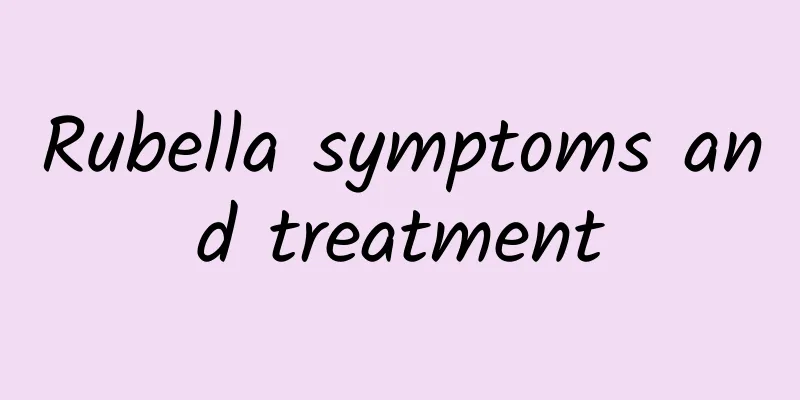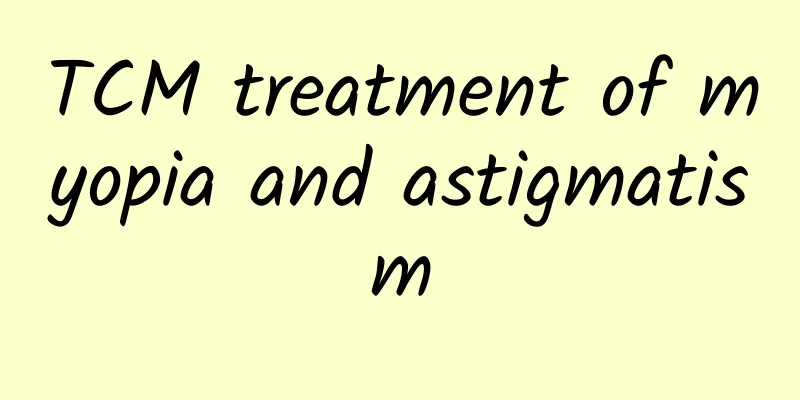Rubella symptoms and treatment

|
Rubella is an acute infectious disease mainly caused by the rubella virus. Its symptoms and signs are mainly swollen lymph nodes or rash, with some itchy sensation when touched. Its treatment and care in daily life are also relatively critical. At the same time, it mainly involves the treatment of some general complications and some other types of medication. In daily life, we must pay attention to the occurrence and treatment of some complications. Preventive care mainly focuses on passive immunity or some automatic immune functions of rubella. Reasonable examinations must be carried out on the pathology and pathogenesis. The treatment of rubella in daily life is more critical. Below we will introduce the common symptoms and treatment of rubella. The incubation period is 16 to 21 days, with an average of 18 days. Preschool children and adolescents infected with rubella virus often have mild prodromal symptoms such as fever, headache, sore throat, runny nose, and swollen lymph nodes under the occipital bone, behind the ears, and in the neck. About 1 to 2 days later, light red macules and maculopapules begin to appear on the face and neck, spreading to the trunk and limbs within 24 hours. The rash is characterized by a short duration and rapid disappearance. The rash on the trunk may fuse, while the rash on the limbs is scattered and does not fuse. Generally, the rash disappears quickly on the third day without leaving any trace, and sometimes there may be mild desquamation. Pinhead-sized red petechiae can be seen on the soft palate. The prodrome disappears as soon as the rash appears, but the lymphadenopathy persists for a long time and is tender but not suppurative. Rubella is a benign infectious disease with a generally good prognosis. Complications are rare, but may sometimes occur, including tracheitis, otitis media, joint pain, purpura, etc. If a pregnant woman contracts rubella during early pregnancy (within 4 months), it may cause miscarriage, premature birth, stillbirth, and fetal malformation (congenital rubella syndrome). 1. General treatment Rubella patients generally have mild symptoms and do not require special treatment. Those with more pronounced symptoms should rest in bed and eat liquid or semi-liquid food. Symptomatic treatment can be given to patients with high fever, headache, cough, and conjunctivitis. 2. Treatment of complications of encephalitis: Patients with high fever, drowsiness, coma, and convulsions should be treated according to the principles of epidemic encephalitis B. For patients with severe bleeding tendency, adrenal cortex hormones can be used for treatment and fresh whole blood transfusion can be performed if necessary. 3. Children with congenital rubella should receive good care and education from an early age. Medical staff should work closely with the parents of the sick children, nursery teachers, and school teachers to observe the growth and development of the sick children, measure hearing, correct deformities, and use surgery to treat glaucoma, cataracts, congenital heart disease, etc. when necessary. Help them learn life knowledge and develop working ability so as to overcome congenital defects. The above are the common treatments and diagnoses of rubella. There are some other types of symptoms and manifestations of rubella in daily life. According to different types and different symptoms, the prevention and care are also different. Reasonable examinations must be carried out on the pathology and pathogenesis, and treatment must be carried out in time to avoid some complications. |
Recommend
Is Chinese medicine effective in treating constipation?
There are many reasons for constipation, and it i...
What are the heat-clearing and detoxifying formulas?
A bad life is a headache for everyone, and in ord...
Precautions for Chinese medicine: Remember the 15 improper uses
Some patients think that "long illness makes...
What should I do if there is yellow on my eyelids?
If yellow tumors appear on the eyelids, it may be...
Do I need to pop the blisters caused by burns? Why?
Since burns can be divided into many types, diffe...
Can pregnant women drink pearl milk tea?
Pearl milk tea is popular with many people. It ha...
Effects and functions of Songshisan
We all know that the traditional Chinese medicine...
Standard formula of Chinese medicine Sijunzi Decoction
Sijunzi Decoction is a widely circulated prescrip...
What to do if your stomach is always upset
The stomach is a very important organ in our huma...
What are the sequelae of carbon monoxide poisoning?
Carbon monoxide poisoning is very likely to leave...
What to eat when you have a cold, feel dizzy, weak, and limp?
There are many symptoms of a cold. The most commo...
What to do if perianal abscess recurs? How to improve
Perianal abscess is a symptom caused by infection...
Stye moxibustion treatment method
After a stye occurs, many people will think of us...
The most obvious symptoms of venous leakage
Venous fistula is a male reproductive disease, wh...
Why is my right arm numb?
In fact, nowadays, the probability of people havi...









